13 Best Herbal Teas For Dizziness
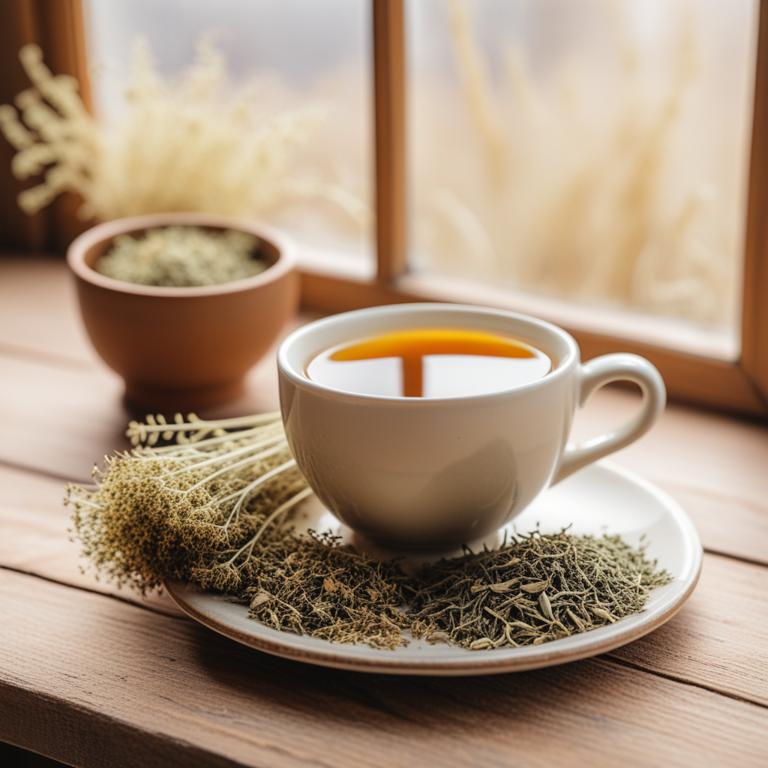
Herbal teas for dizziness are a natural remedy that involves the consumption of herbal infusions to alleviate dizziness and balance disorders.
These teas are beneficial in treating dizziness due to their anti-inflammatory properties, which help to reduce stress and promote relaxation, thereby alleviating symptoms.
Examples of herbal teas used to treat dizziness include peppermint tea, which helps to calm the digestive system and relieve nausea; ginger tea, which aids in digestion and reduces inflammation; lavender tea, which promotes relaxation and reduces anxiety; chamomile tea, which soothes the mind and body; and passionflower tea, which calms the nervous system and reduces dizziness.
By incorporating these herbal teas into one's diet, individuals can experience relief from dizziness and maintain their balance and equilibrium.
According to "Pharmaceuticals (Basel, Switzerland)", teas for dizziness, such as those containing Jaeumgeonbi-Tang (JGT), may help improve redox status and balance psycho-emotional stress hormones, potentially alleviating dizziness symptoms.
Below there's a list of the 13 best herbal teas for dizziness.
- 1. Ginkgo biloba teas
- 2. Valeriana officinalis teas
- 3. Cinchona officinalis teas
- 4. Passiflora incarnata teas
- 5. Piper methysticum teas
- 6. Melissa officinalis teas
- 7. Lavandula angustifolia teas
- 8. Mentha x piperita teas
- 9. Cynara scolymus teas
- 10. Arctium lappa teas
- 11. Zingiber officinale teas
- 12. Panax ginseng teas
- 13. Avena sativa teas
Also you may be interested in...
TODAY'S FREE BOUNDLE
Herb Drying Checklist + Herbal Tea Shopping List + Medicinal Herbs Flashcards
Enter you best email address below to receive this bundle (3 product valued $19.95) for FREE + exclusive access to The Aphotecary Letter.
$19.95 -> $0.00
1. Ginkgo biloba teas

Ginkgo biloba teas have been traditionally used to treat dizziness, thanks to their unique properties that help to improve blood flow and reduce inflammation in the brain and body.
The bioactive constituents of Ginkgo biloba, including flavonoids, terpenoids, and bilobalide, work together to increase oxygen delivery to the brain, reduce oxidative stress, and stabilize blood pressure, thereby alleviating dizziness symptoms.
The benefits of using Ginkgo biloba teas to treat dizziness include improved circulation, reduced frequency and severity of episodes, and enhanced overall cognitive function.
By incorporating Ginkgo biloba teas into one's daily routine, individuals can experience relief from dizziness and enjoy a better quality of life.
Related Study
According to "Advances in therapy", Ginkgo biloba teas for dizziness may be beneficial as they induced a slight decrease of saccadic delay and considerably increased saccadic velocities in patients with vertigo and dizziness caused by vascular vestibular disorders.
2. Valeriana officinalis teas
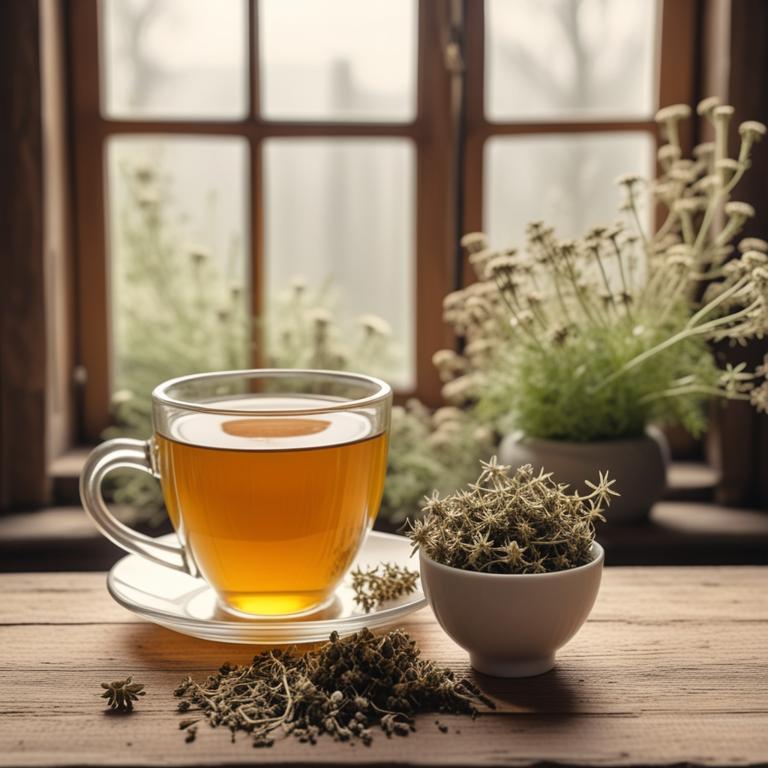
Valeriana officinalis teas have been traditionally used to treat dizziness, a common symptom associated with various health conditions.
The sedative and anti-anxiety properties of this herbal preparation help to calm the nervous system, reducing dizziness and promoting a sense of balance.
The bioactive constituents, including valerenic acid, isovaleric acid, and valepotriates, play a crucial role in modulating the brain's GABA receptors, which helps to regulate the body's response to stress and anxiety.
By promoting relaxation and reducing anxiety, Valeriana officinalis teas provide a natural and effective remedy for alleviating dizziness and improving overall well-being.
Related Study
According to "Praxis", Valeriana officinalis teas for dizziness may slightly impair performance during the first few hours after ingestion, but residual sedative effects, also known as "hangover", do not seem to be a concern based on the study.
3. Cinchona officinalis teas
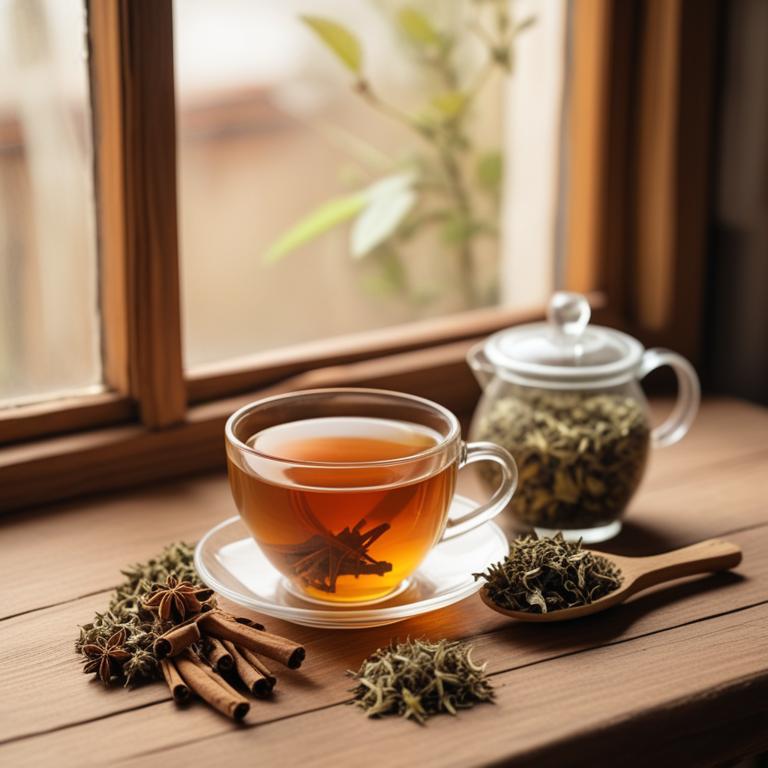
Cinchona officinalis teas have been traditionally used to treat dizziness due to their anti-inflammatory, antioxidant, and vasodilatory properties.
These properties help to treat dizziness by improving blood flow to the brain and reducing inflammation in the blood vessels, which can contribute to feelings of lightheadedness.
The bioactive constituents of Cinchona officinalis teas, including quinine, quinidine, and other alkaloids, play a crucial role in treating dizziness by stabilizing blood pressure and preventing excessive dilation of blood vessels.
The benefits of using Cinchona officinalis teas to treat dizziness include natural and non-addictive relief from symptoms, improved overall circulation, and a reduced risk of cardiovascular complications.
4. Passiflora incarnata teas
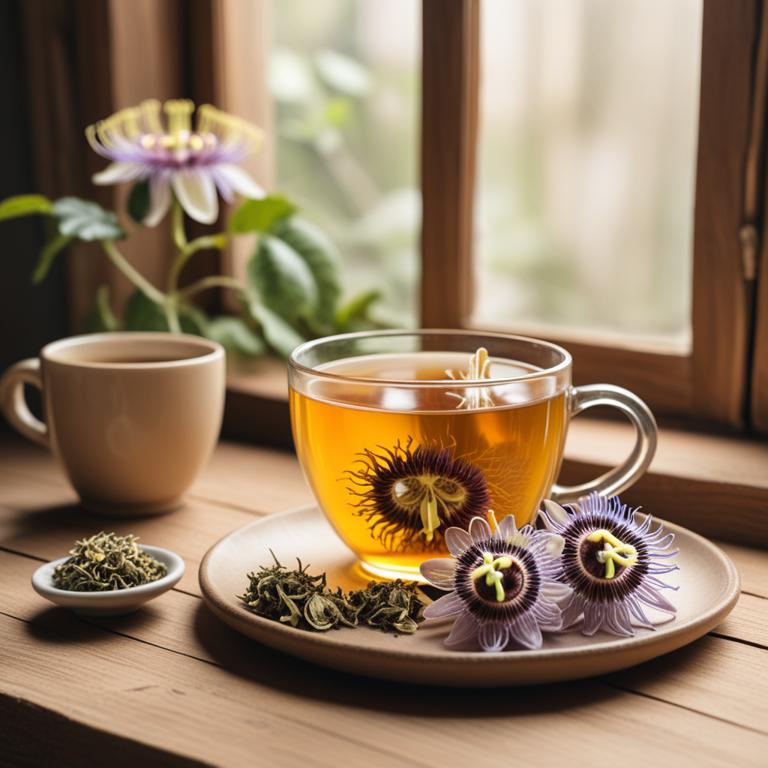
Passiflora incarnata teas, also known as maypop or passionflower tea, have been traditionally used to treat dizziness and balance disorders.
The sedative and anxiolytic properties of this herbal preparation help to calm the nervous system and alleviate symptoms of dizziness.
The bioactive constituents of Passiflora incarnata, including flavonoids, alkaloids, and glycosides, work synergistically to reduce anxiety and promote relaxation, thereby helping to treat dizziness.
By consuming Passiflora incarnata tea, individuals can experience benefits such as reduced dizziness episodes, improved balance, and enhanced overall well-being.
Related Study
According to the study, Passiflora incarnata teas may be beneficial in alleviating dizziness due to the predicted pleiotropic effects of its phytoconstituents, including anticonvulsant, antidepressant, and nootropic activities, which were confirmed through pharmacological validation using a pentylenetetrazole kindling mouse model.
5. Piper methysticum teas
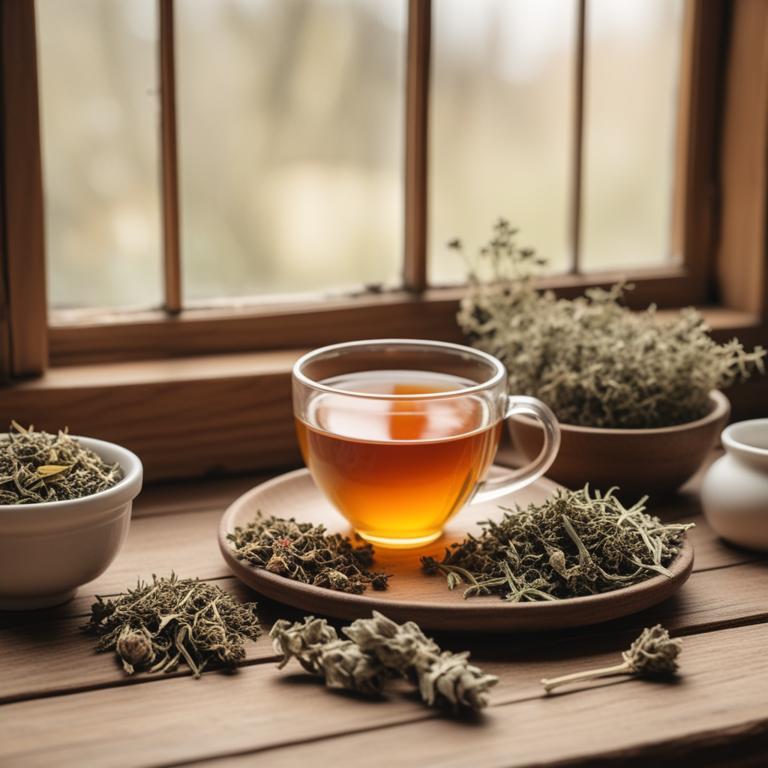
Piper methysticum teas, also known as kava tea, have been traditionally used to treat dizziness and its associated symptoms due to their sedative and anxiolytic properties.
The bioactive constituents of kava tea, such as kavalactones, flavokavains, and kavinol, play a crucial role in reducing anxiety and stress, which are often linked to dizziness.
By promoting relaxation and reducing anxiety, kava tea helps to alleviate dizziness and improve overall well-being.
The benefits of using kava tea for dizziness treatment include its non-addictive nature, lack of side effects, and ability to provide fast relief from symptoms.
6. Melissa officinalis teas

Melissa officinalis teas, also known as lemon balm tea, have been traditionally used to treat dizziness due to their calming and soothing properties.
The essential oils present in this herbal preparation, such as eugenol and linalool, help to reduce anxiety and stress, which can contribute to dizziness.
By promoting relaxation and reducing muscle tension, Melissa officinalis teas can help alleviate dizziness and improve overall well-being.
The benefits of using Melissa officinalis teas to treat dizziness include reduced anxiety and stress levels, improved sleep quality, and a calming effect on the body.
7. Lavandula angustifolia teas

Lavandula angustifolia teas, derived from the flowers of the lavender plant, have been traditionally used to treat dizziness and related symptoms.
The soothing properties of this herbal preparation are attributed to its calming and sedative effects, which help to ease dizziness by promoting relaxation and reducing anxiety.
The bioactive constituents, including linalool and linalyl acetate, contribute to its therapeutic effects by modulating the nervous system and improving blood flow to the brain.
Regular consumption of Lavandula angustifolia teas has been associated with a range of benefits, including reduced dizziness, improved balance, and enhanced overall well-being.
8. Mentha x piperita teas
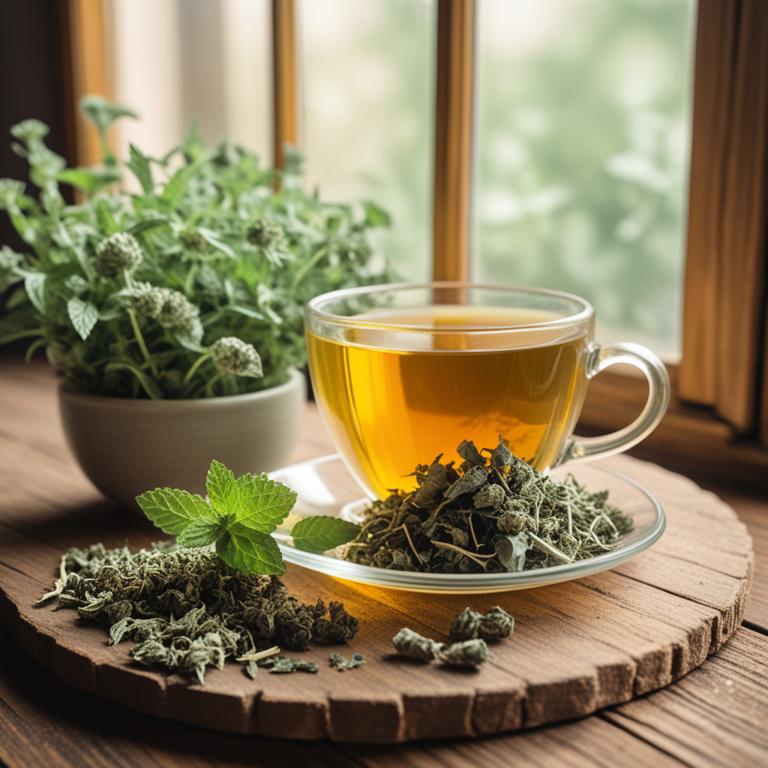
Mentha x piperita teas, also known as peppermint tea, have been traditionally used to treat dizziness and other related symptoms.
The properties of this herbal preparation help to alleviate dizziness by soothing the digestive system, reducing nausea and vomiting, and calming the nervous system.
The bioactive constituents of peppermint tea, including menthol, menthone, and limonene, exhibit anti-inflammatory and antioxidant properties that contribute to its therapeutic effects, helping to relax the smooth muscles in the digestive tract and improve blood flow to the head.
By consuming Mentha x piperita teas, individuals can experience benefits such as reduced dizziness, improved digestion, and a sense of calmness and relaxation.
9. Cynara scolymus teas
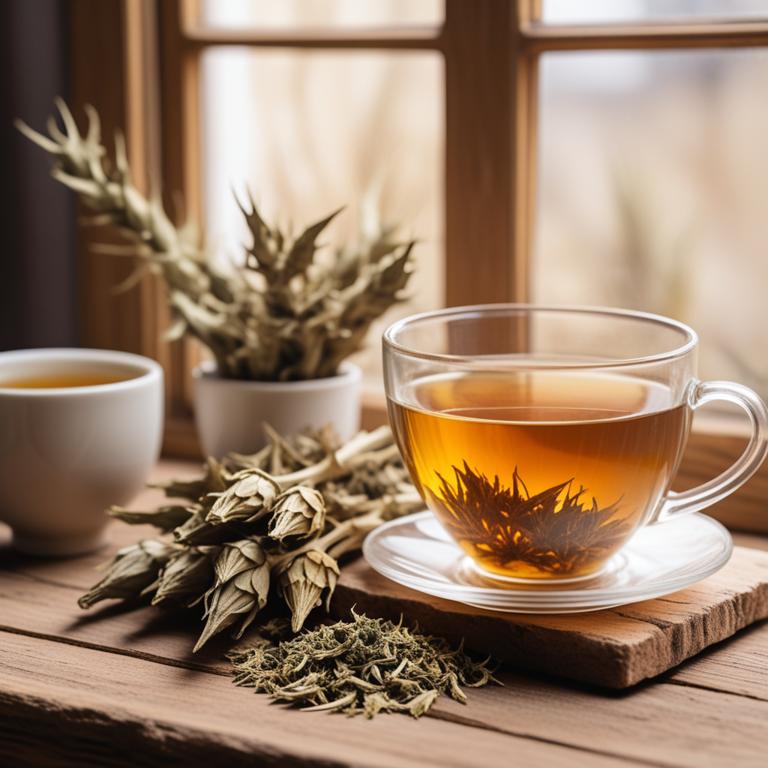
Cynara scolymus teas, also known as artichoke tea, have been traditionally used to treat dizziness due to its ability to improve blood flow and reduce inflammation.
The tea's properties help to alleviate dizziness by acting as a vasodilator, which widens blood vessels and improves circulation, thus increasing oxygen supply to the brain.
The bioactive constituents present in Cynara scolymus teas, such as cynarin and silymarin, have antioxidant and anti-inflammatory properties that help to reduce oxidative stress and inflammation in the body, which are often associated with dizziness.
Regular consumption of artichoke tea has been shown to provide benefits in treating dizziness by improving cognitive function, reducing anxiety, and promoting overall well-being.
10. Arctium lappa teas
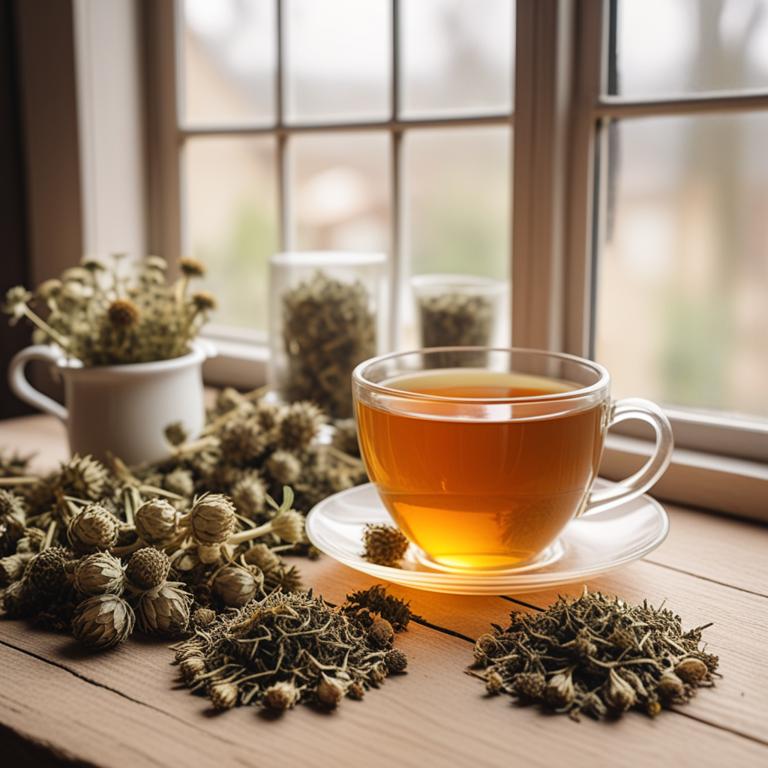
Arctium lappa teas have been traditionally used to treat dizziness, with its anti-inflammatory and antioxidant properties helping to alleviate symptoms.
This herbal preparation is believed to help treat dizziness by reducing inflammation in the body and promoting balance, which is attributed to the presence of bioactive constituents such as sesquiterpene lactones and flavonoids.
The sesquiterpene lactones in Arctium lappa teas, particularly inulin and cynarin, have been shown to have a stabilizing effect on the nervous system, helping to reduce dizziness and promote overall well-being.
By consuming Arctium lappa teas, individuals can benefit from reduced inflammation, improved balance, and a decrease in the frequency and severity of dizziness episodes.
11. Zingiber officinale teas

Zingiber officinale teas, derived from the rhizome of the ginger plant, have been traditionally used to treat dizziness and related ailments due to their anti-inflammatory, antioxidant, and carminative properties.
The bioactive constituents of ginger, including gingerols and shogaols, help to alleviate dizziness by reducing nausea and inflammation in the stomach and digestive system.
By reducing inflammation and promoting digestion, Zingiber officinale teas can help to alleviate dizziness and provide relief from its associated symptoms.
Regular consumption of ginger tea may also help to prevent dizziness by regulating blood pressure and improving circulation, making it a beneficial herbal remedy for individuals experiencing dizziness.
Related Study
According to "ORL; journal for oto-rhino-laryngology and its related specialties", Zingiber officinale teas for dizziness, ginger root reduced the induced vertigo significantly better than did placebo.
12. Panax ginseng teas
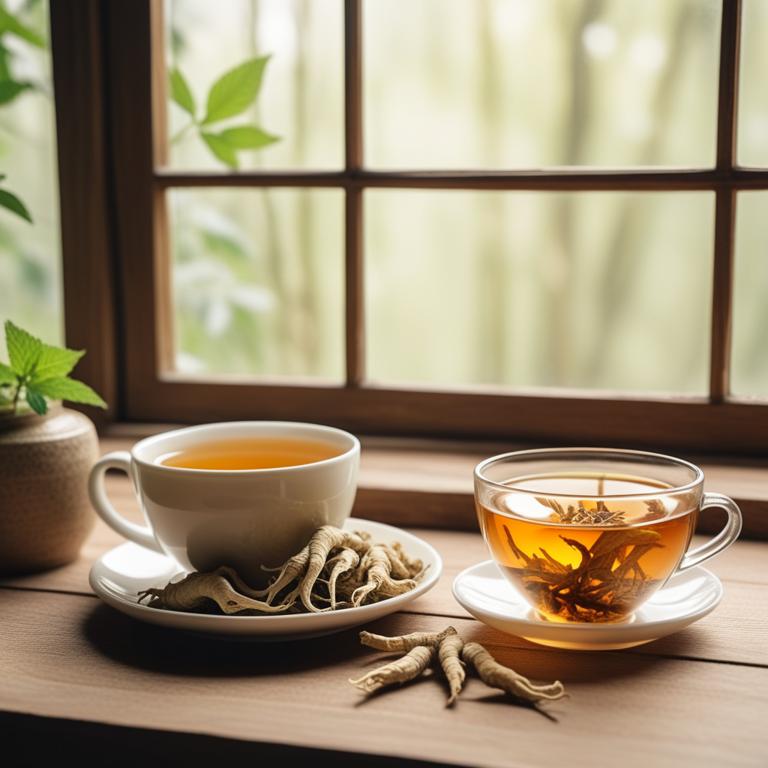
Panax ginseng teas have been traditionally used to treat dizziness and other balance-related disorders due to their adaptogenic and anti-inflammatory properties.
The bioactive constituents of Panax ginseng, including ginsenosides and panaxans, help to improve blood flow and oxygenation to the brain, which can alleviate dizziness and vertigo.
By increasing the body's resistance to stress and promoting relaxation, Panax ginseng teas can also help to reduce the frequency and severity of dizziness episodes.
The benefits of using Panax ginseng teas to treat dizziness include improved balance, reduced fatigue, and enhanced overall well-being.
Related Study
According to "American journal of health-system pharmacy : AJHP : official journal of the American Society of Health-System Pharmacists", Panax ginseng teas may be potentially safe for dizziness as it was listed among potentially safe herbs in the study.
13. Avena sativa teas
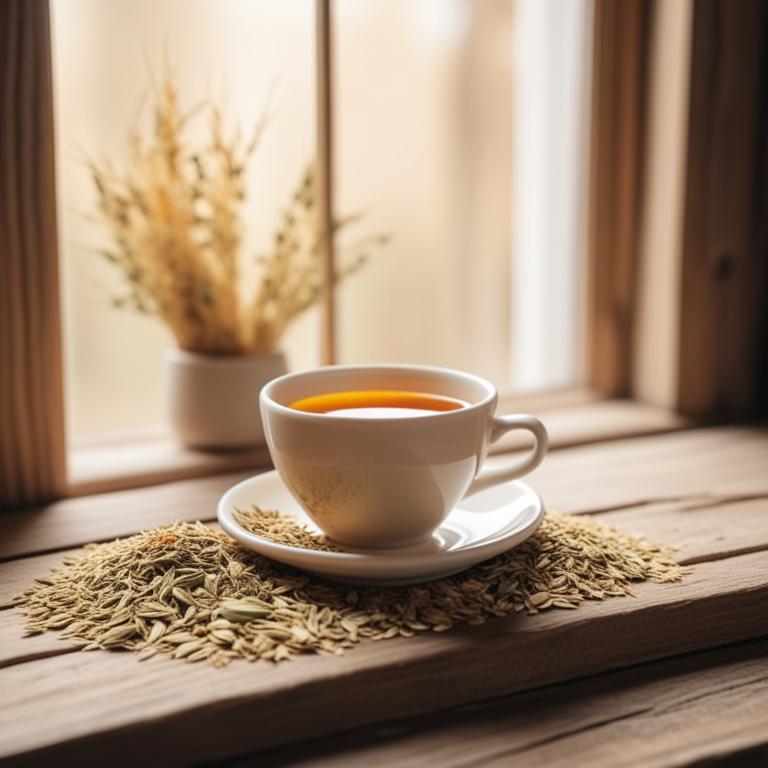
Avena sativa teas, derived from the oats plant, are a popular herbal remedy for treating dizziness due to their sedative and anti-inflammatory properties.
The soothing effects of Avena sativa teas help to calm the nervous system, reducing symptoms of dizziness and promoting balance and equilibrium.
Bioactive constituents such as avenacoside, avenanthramides, and ferulic acid in Avena sativa teas contribute to their therapeutic benefits by relaxing muscles, reducing inflammation, and improving blood circulation.
Regular consumption of Avena sativa teas has been shown to provide relief from dizziness and its related symptoms, promoting overall well-being and relaxation.